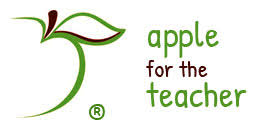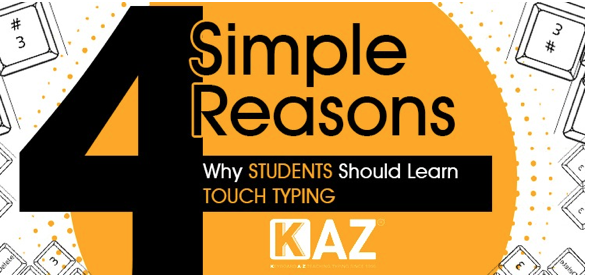‘Apple For The Teacher’ are a passionate and dedicated team, sharing a common goal; to put the love in learning.
“We take fun seriously. We believe children need to be enthused in their education. We believe children should be given the tools to ignite their natural curiosity,” says Tony Johnson, director.
“After meeting the KAZ team at TES Show in October 2019, we were so taken with their inclusive typing product, their nominations, the synergies between the companies and ethos, that we felt the need to include links to their fabulous products on our website. Every child deserves the best and we believe people want to connect with brands that really stand up for something, which is why we wanted to help and work with KAZ.
Like KAZ we believe in educating children with a purpose. We respect the qualities and uniqueness of children. We understand that children don’t all learn in the same way, or on the same day. We understand and recognise that children have different needs and abilities and sometimes a different approach is needed, to allow them to reach their full potential.”
About Apple For The Teacher:
Apple For The Teacher, like KAZ, proudly carry the mark associated with all BESA members. They design educational resources for schools, teachers and home educators, giving instant access, at the touch of a button, to child friendly printables and presentations.
Striving to inspire and enthuse learning for children and their aim is to reduce the growing workload for teachers but not with more of the same…
“We test many resources on the children they are designed for, assessing their level of engagement, taking their feedback on board, looking at the progress and how the activities enrich the learning experience of the whole child. We care.”
Focus is on quality, not quantity as the learning experience really does matter for both educators and children.
“We really do put children right at the core of their learning, because we can and because that is where they truly deserve to be!”
About Julie:
“Julie is more than a Teacher. The children she works with not only learn but they become passionate about learning. She connects with them on every level, she believes in them and they feel it. She has a great understanding of every child’s needs and does whatever it takes to allow them to blossom. Her passion and love for children…” Joanne (Parent)
“Julie’s lessons were created with the children in mind. Working with children with SEN could be challenging, engaging them in learning was not easy, but Julie did this with ease. Lessons with Julie were a joy, not only for the children but the Teaching Assistant too. The children were only too eager to participate and were always smiling. From finding shapes in everyday objects to bringing stories to life in literacy, the children blossomed regardless of their level and ability as she carefully crafted resources to suit the needs of every learner.” – Margaret (Teaching Assistant)



